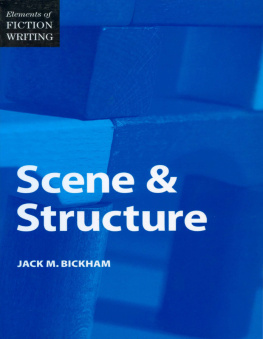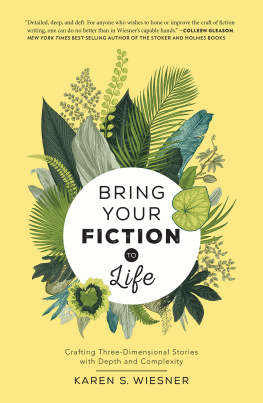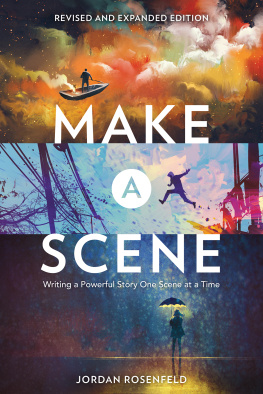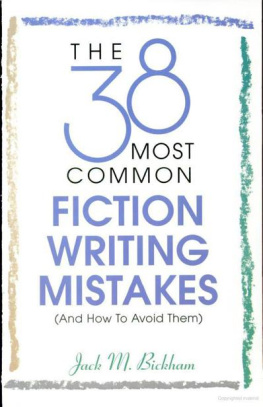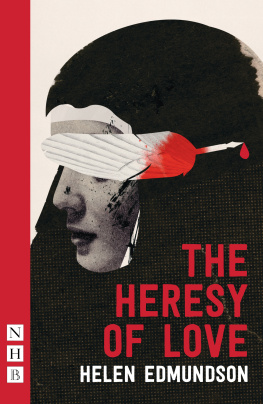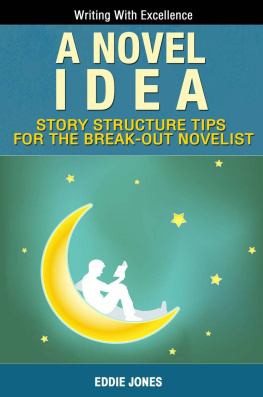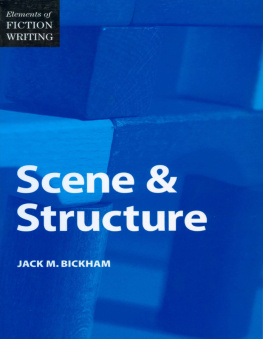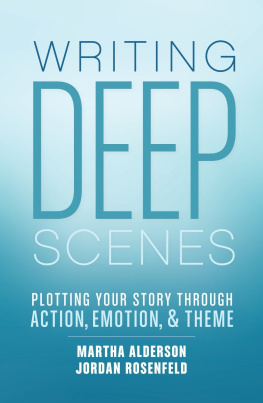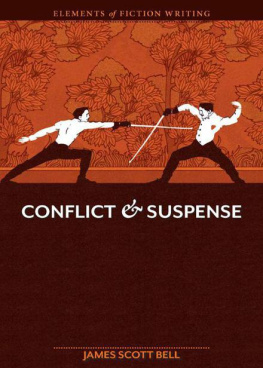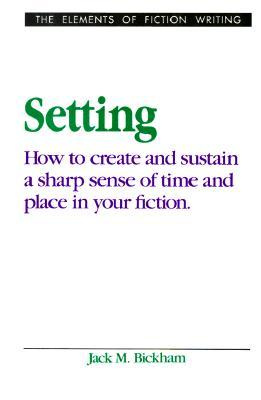SCENE
AND
STRUCTURE
BY
JACK M. BICKHAM
This book is dedicated to the memory of Dwight V. Swain: writer, teacher and friend. Without him, I would have had no career as a novelist.
J.M.B.
CONTENTS
CHAPTER 1
THE STRUCTURE OF
MODERN FICTION
MENTION WORDS SUCH AS STRUCTURE, form, or plot to some fiction writers, and they blanch. Such folks tend to believe that this kind of terminology means writing by some type of formula or predetermined format as rigid as a paint-by-numbers portrait.
Nothing could be further from the truth.
In reality, a thorough understanding and use of fictions classic structural patterns frees the writer from having to worry about the wrong things, and allows her to concentrate her imagination on characters and events rather than on such stuff as transitions and moving characters around, when to begin or open a chapter, whether there ought to be a flashback, and so on. Once you understand structure, many such architectural questions become virtually irrelevant and structure has nothing to do with filling in the blocks.
Structure is nothing more than a way of looking at your story material so that its organized in a way thats both logical and dramatic. Structure is a process, not a rigid format. Structure in fiction is not static, but dynamic.
We need structure in our fiction for many reasons, but the main one goes to understanding. We need structure (a) as writers, so our stories will hold together and make sense. We need structure (b) as readers, so we can understand this story were reading, and feel something as a result.
The structure of a story is internal. Its a bit different from form. The form of a story is external. The two interrelate, but theyre not exactly the same thing. Structure is more like the pattern of 2 4s, braces and other materials inside your house. Form has to do with whats been done with the structure whether the house is colonial or contemporary, large or small, one- or two-story, for example.
Obviously, however, its hard to talk about structure without considering form, and vice versa. A builder planning to build in the form of a ten-floor office building would not use all the same construction materials in the walls or other structural components that he would in building a one-floor bungalow. On the other hand (lucky for the builder!) many of the same principles of construction would apply to both projects. In both he would have to remember that there are practical limits to how long a span can be without bracing of some kind, for example and in both he might want to remember that a building needs a solid foundation and a good roof! Thus, whatever his form, his fundamental principles of structure would be the same.
Its the same in fiction. Story length, author intention, traditional expectations of the auidence, and all sorts of things may affect the form a story may take. But underneath most forms lies the same structure the same unchanging priniciples, the same creative laws.
Those are what this book is mainly about.
The short story writer is taught that a short story has a beginning, a middle and an end, or perhaps a situation, a complication, a climax and a denouement. The novelist may hear advice such as paint a broader picture, or give the characters more depth, or even make all your chapters twenty pages long none of it very darned helpful when youre sitting at your word processor with tiny droplets of blood oozing from your forehead. But once you understand structure, youll see with growing clarity that short story and novel alike have many of the same basic elements of structure so that whatever your form, long or short or in the middle, you can always work with the same basics.
THE HISTORY OF STRUCTURE
This wasnt always true. The first English novelists, for example, knew they wanted a very-long-story form. They had epic poems as their only obvious guideline. Literary historians generally agree, however, that the first novels in the English language had a far simpler form and internal structure than much earlier long narrative poems such as Beowulf.
In writing for a broad, popular audience (they hoped!), the first neo-novelists came up with a very simple device: the personal letter. The letter itself had no formal internal structure beyond that of [salutation] + [reporting and comment] + [signature]. A sequential series of such relatively unstructured letters became the form for the book.
The earliest English novelists like Richardson used this device well. The letter, however, always removed the reader somewhat from the action because everything had to be told obviously some time after the event actually took place.
Writers who took the next step in developing internal structure for the long prose narrative made it a small step: They built their novels around a series of entries in a journal or diary (Robinson Crusoe being a good example). This form allowed a bit more informal personal commentary on the action by the writer, and also worked well at the time. Again, however, the reader was being told the story after it took place, rather than seeming to experience it as it unfolded. And even a journal or diary was obviously a literary device that took a certain amount of extra imaginative effort on the part of the reader if he was to really get into it.
The next step, also a short one, was more significant because it tried to attack the limitation problems of letter-diary-journal structure. This was the adoption of a conversational structure with the first-person narrator writing you, the reader, his story as if he were telling it to you in his living room, with all the asides, explanations to dear reader and loose associational tone that such a structure allowed. More important, in jettisoning the documentary approach, it freed the novelist to tell the story more as if it were happening in the story now rather than as something being documented after the event; in other words, it added some sense of immediacy.
It was only after all these early experiments had been tried that later novelists notably the greatest of them all, Charles Dickens began developing the kind of structure more familiar to modern readers: a sequence of scenes played in the story here-and-now as if they were taking place as the reader read and imagined them, and told (often first person) from the viewpoint of a character in the series of scenes as they took place.
Novels and short stories structured around letters, diaries or author conversation use time-honored devices, and you can find an occasional novel of one or another of these types that achieves success. There are, however, a number of other general forms.
TYPES OF FORMS
The first-person novel, told by a character inside the story action, remains a form that is often seen today. It offers the strength of seeming actuality, and helps the reader identify with the central character because only the story I ever shares thoughts or feelings.
More common today is the story told in the third person, but with the viewpoint limited to only one character within the story action. This is almost always the character with the most to win or lose as the story unfolds a hero or heroine.
More ambitious (in terms of length) novels often slightly alter this form, still telling the story in the third person, but jumping around to many character viewpoints. It is a measure of the sophistication of the novel today, however, that careful study will usually show that the viewpoint in such multiple-viewpoint novels remains limited to a single character in most structural compartments or scenes of the book.

